 Your new post is loading...
 Your new post is loading...
The press will destroy Trump and Trump will destroy the press.
Consider that trust in media began falling in the ’70s, coincident with what we believe was our zenith: Watergate. We brought down a President. A Republican President.
Now the press is the nation’s last, best hope to bring down a compromised, corrupt, bigoted, narcissistic, likely insane, incompetent, and possibly dangerous President. A Republican President. Donald Trump.
If the press does what Congress is so far unwilling to do — investigate him — then these two Republican presidencies will bookend the beginning of the end and the end of the end of American mass media. Any last, small hope that anyone on the right would ever again trust, listen to, and be informed by the press will disappear. It doesn’t matter if we are correct or righteous. We won’t be heard. Mass media dies, as does the notion of the mass....
Using NewsWhip Analytics, we found the top 10 stories from five of our top 10 Facebook publishers in December 2016. NewsWhip Analytics can give data on hundreds of stories from different publishers over various time periods, allowing audience development and analytics teams to perform in-depth analysis on their most successful content.
We ranked the stories by total engagements they received on Facebook, Twitter, LinkedIn and Pinterest, and then calculated the average word count for the top ten stories. We didn’t include headlines, subheadings, pull quotes, or calls to action within the story (‘Read More’, ‘Scroll down for video’ etc) in the word count.
Here’s what the average length of the top ten most engaged stories from five top publishers were in December....
On a platform like Facebook, the combination of self-identification from users and algorithmic response to stories that start getting shared heavily, means that there’s lots of room for opinion stories to reach wide readerships. For many large news sites, strong opinion stories on issues of the day, or from recognised names, can result in major engagement boosts from users sharing a story that identifies with their views, or by weighing in on the comments section. To understand how opinion based stories contribute to Facebook engagement for large sites, we took a close look at the role of Op-Ed content in driving engagement for two major general news publishers. Using NewsWhip Analytics, we can specify any domain we want to analyse, as well as the category that we’re interested in looking at on the site. In this case, we zoomed in on English-language Opinion articles from the New York Times and the Guardian, to get their numbers for the month of December 2016....
Three weeks after Donald Trump won a historic victory to become the 45th president of the United States, the media postmortems continue. In particular, the role played by the media and technology industries is coming under heavy scrutiny in the press, with Facebook’s role in the rise of fake news currently enjoying considerable coverage. This represents a shift from earlier in the campaign, when the volume of media airtime given to Trump was often held culpable for “The Apprentice” star’s political ascendancy. In truth, a Trump presidency is – in part – a reflection of the status and evolution of the media and tech industries in 2016. Here are 10 ways that they combined to help Trump capture the White House in a manner not previously possible. Without them, Trump might not have stood a chance....
What if, in the mad dash two decades ago to repurpose and extend editorial content onto the Web, editors and publishers made a colossal business blunder that wasted hundreds of millions of dollars? What if the industry should have stuck with its strengths—the print editions where the vast majority of their readers still reside and where the overwhelming majority of advertising and subscription revenue come from—instead of chasing the online chimera? That’s the contrarian conclusion I drew from a new paper written by H. Iris Chyi and Ori Tenenboim of the University of Texas and published this summer in Journalism Practice. Buttressed by copious mounds of data and a rigorous, sustained argument, the paper cracks open the watchworks of the newspaper industry to make a convincing case that the tech-heavy Web strategy pursued by most papers has been a bust. The key to the newspaper future might reside in its past and not in smartphones, iPads and VR. “Digital first,” the authors claim, has been a losing proposition for most newspapers....
Back in June, I talked with Parse.ly data analyst Conrad Lee about why stories about Donald Trump weren’t attracting the same audience online as they were on television. At the time, based on data from more than 100,000 news articles from 300 newsrooms, it looked as if Trump stories were actually less popular than stories about other candidates, including Hillary Clinton. This was before the convention and the formal nomination of both candidates of course.
Lee took an another look at the data last week and found that things have shifted. Trump still receives the lion's share of articles, even from publishers that are left-leaning.
Today the data show that Trump stories get more page views than stories about Clinton do. Both the overall number of stories and page views per post peaked around the conventions in late July, before dipping again in August.
Lee makes no distinction between positive and negative stories. Both candidates have been the subject of intense reporting in recent weeks. But this is an interesting set of data nonetheless as we think about the proper role of journalists going into the first debate next week, when 75 percent of voters plan to tune in....
To paraphrase Oscar Wilde: “The only thing worse than transitioning from a print to digital advertising model, is not transitioning from a print to digital advertising model.”
OK -- Oscar’s version was a lot pithier. But the paradox pretty well sums up the predicament faced by newspaper publishers, who not only must contend with declining print circulation and ad woes, but also face disappointing returns on the digital ad side, per the Pew Research State of the News Media Report.
According to Pew, U.S. newspaper publishers’ total advertising revenue sank 8% in 2015 compared to the prior year, with most of this decline due to continuing drops in print ads, which still make up 75% of total ad revenues, and fell 10% last year.
However, digital, long touted by publishers as the future of the industry, isn’t even close to making up for these drops: Digital advertising actually sank by 2% as well.
(Pew’s estimates for ad revenue are based on its analysis of results from seven large, publicly-traded newspaper publishers; Pew notes that the Newspaper Association of America stopped reporting official revenue figures for the industry back in 2013)....
For a while, it seemed like television was being supplanted by online video as cord-cutting increased dramatically. However, it’s becoming more clear that TV and social media are perfect partners, as tweets and other social posts spike around event television. New data from Nielsen Social demonstrates how much activity surrounds broadcast TV, streaming and cable.
Twitter users are highly engaged during popular shows and live television events, both in terms of hashtags and @mentions. #SB50, the official Super Bowl hashtag, received more than 3.7 million tweets. Other live events like the #Oscars also fared very well, with 2.9 million tweets. And scripted television events scored, with #Empire generating 702,000 tweets and @kanyewest receiving 489,000 tweets during his Saturday Night Live performance.
Whether it’s online streaming, cable TV or broadcast TV, recurring series seem to have remarkable staying power on social. Empire received an average of 387,000 tweets from 95,000 authors each episode, while cable-exclusive The Walking Dead received 435,000 tweets from 150,000 authors on average....
Netflix's refusal to show ads is a core part of its identity.
The company has always maintained that killing ads provides a better experience for its subscribers, and shows no signs of changing that position. And that stance has had an effect.
"We know one of the benefits of an ecosystem like Netflix is its lack of advertising," Howard Shimmel, a chief research officer at Time Warner, told Bloomberg last year. "Consumers are being trained there are places they can go to avoid ads."...
What we need in the adblocking debate is a fresh perspective. Cue Birmingham website Paradise Circus, which has today released a browser extension to get rid of all that pesky journalism slowing down your daily advertising consumption: “The ads are really getting bogged down by all that news… what if we could just turn that off? Surely we could hand that 9.3% of processor time back to the stuff that matters… back to ad trackers, and flash popovers.” The extension strips out all the ‘content’ on the Birmingham Mail website so that advertising can load quicker....
The Seattle Times—and many publishers like them—is in an interesting place.
These are some of the big challenges that The Seattle Times, one of the largest daily newspapers in the Western U.S., has looked to solve. And solve they have!
With huge increases in social traffic and a smart and simple content workflow, The Times has made grown by leaps and bounds with its new social media strategies. Here’s a bit more about the tools and workflows that are helping them reach the next level on social media.
“We are in a street fight for human attention.”So says Amy O’Leary, editorial director at Upworthy, in a new SlideShare explaining the notorious—and oft-lampooned—media company’s revamped editorial strategy.She’s not exaggerating. Attention is hard to come by these days, and for most in the media industry, trying to attract and retain readers besieged by digital content at every turn is about as rough-and-tumble as it gets....
We rank the biggest UK publishers by their Facebook interactions, and find that things are hotting up when it comes to UK content on social media.
In recent months, we’ve noticed that UK publishers have been making more and more of an impact in our social rankings each month.
First the Mirror became the first ‘legacy media’ outlet to ascend to the top 10 Facebook publishers internationally. Then the Telegraph entered the top Twitter publishers, and we noticed some strong performances from regional UK publishers.
This comes in tandem with the news that the Independent is to become the latest London-based news outlet to expand its interests to the US, joining the Mail and the Guardian (both of which also offer digital Australian editions).
|
On January 15, 2009, I had just come back from a lunch meeting when I heard a huge splash while checking email and Twitter. I happened to see a few tweets from fellow New Yorkers mentioning that they had just seen a plane crash near my office on the West Side. I ran to the window and saw United 1549 landing on the Hudson. I grabbed my coat and phone, and ran to the scene.
I chased the plane downtown with the rest of the crowd, tweeting pictures and an account of the events while trying to call rescue. There were no cameras and no journalists -- just regular people trying to see if there was anything we could do while sharing our experience. Enter social journalism....
How do you measure a year in news? 2016 brought political earthquakes in the U.S. and Britain. Police shootings and terror attacks were recorded on cell phones. In pop culture, we collectively mourned for Prince and Carrie Fisher, gaped in astonishment at Sean Penn’s gonzo interview of El Chapo, and celebrated human achievement at the Rio Olympics. Reporters turned these events into stories that drew the attention of millions of readers. A new report out this week from web analytics firm Chartbeat reveals the best of the best — “the stories that defined the breadth, the depth, and the power of journalism in 2016” — drawing on data from more than 50,000 media sites around the world. How does one story stand out in a sea of content? It has to be outstanding journalism. The 102 stories on the list had the most total engaged time — how long online visitors spent actively reading — of all the stories that Chartbeat measured. In total, they commanded 2.5 billion engaged minutes, or almost five millennia of the world’s collective attention. Not surprisingly, the list is dominated by politics, with Nate Silver’s Election Forecast at the top. The top breaking news story is CNN’s coverage of the Orlando nightclub shooting in June. Sports, opinion and entertainment make the list as well....
We look at five areas of social publishing that are growing in importance in 2017, from Instagram to the importance of original storytelling. For publishers, there’s plenty of anticipation about what 2017 might bring for opportunities to connect with readers and grow their audience base on social media. Using NewsWhip Analytics, we put together some charts showing some interesting points in social publishing at the end of 2016 and start of 2017. For more 2017 predictions and advice, be sure to check out our full 2017 Predictions Report, featuring views from top editors and social media analysts at newsrooms including the Guardian, the Associated Press, Business Insider, the Wall Street Journal and more....
Donald Trump’s foray into news-like production has taken its next step, with the launch of a nightly program on Facebook Live. The show, Trump Tower Live, started Monday at 6:30 p.m. ET. It’s hosted by campaign advisors Boris Epshteyn and Cliff Sims. Tomi Laren of The Blaze is also part of the coverage.
Monday’s program started rough. The anchors were put on without knowing they were live. You could see the boom microphone drop into the shot. Trump campaign manager Kellyanne Conway was checking her phone. We heard the director (or someone off set) count them in from 10. Just as with the program the group produced last week on debate night, the picture is poorly lit and out of focus.
And just as with that debate show, none of those flaws matter to Trump’s core audience.
As of 9 p.m. ET, just after the program ended, it had more than 1 million views. That’s not the same as one million viewers, but it’s a respectable number for sure. It had more than 30 thousand shares and 130,000 reactions. CNN reports the stream averaged 40,000 – 60,000 viewers in its first half hour. People took notice. The program this team produced on debate night has had more than nine million views. There is an audience for these shows long after their original broadcast.
In August, Washington Post Managing Editor Cameron Barr and his fellow senior editors decided to do something about a problem that had been niggling at them for some time:
Articles were becoming too long, often for no good reason.
"We were seeing too many pieces that were in the mid-range of their ambition and their success — coming in at 60, 70 inches of copy," Barr said. "We were seeing the same thing in a number of blogs, where pieces were just too long, and we felt as though editors were not applying the necessary discipline and rigor in how these pieces were being handled on the desk."
The solution? A newsroom-wide initiative to cut down on editorial flab, Barr said. Since the middle of August, he's asked Post's department heads to take responsibility for articles longer than 1,500 words online or 50 inches in print. Bylines, captions, headlines and subheadings don't count....
If you want some light reading for eternity, Google the question “is the media biased.” The question is a staple of both the political right and the socialist left. Either The Media is partisan against Republicans as part of our obvious liberal agenda, or the Corporate Media insidiously perpetuates the status quo by shutting out dissenting voices and uncomfortable narratives in favor of crony capitalism and entrenched privilege. Choose your favorite. They’re both idiotic....
As of March, there were 197,800 Americans working in the “internet publishing and broadcasting” sector versus 183,200 people working for U.S. newspapers.
The BLS data goes back to 1990, and since then employment at newspapers has fallen by nearly 60 percent, having peaked in June 1990 at 457,800 people. The number of newspaper jobs has fallen consistently since then.
Digital publishing, meanwhile, has grown considerably. Throughout much of the early 1990s there were around 30,000 online publishing jobs, though that figure grew to 112,000 by 2000. Then the dot-com bubble burst and the number of jobs shrunk by about half....
A lot of people were surprised when Amazon CEO Jeff Bezos bought The Washington Post for $250 million in 2013.
At the time, The Post was a legacy media company facing years of decline, while Bezos had no prior experience in the newspaper business.
But in less than three years, Bezos has completely changed the outlook of the 140-year-old newspaper. Its readership has exploded, and its content has become more suitable for the digital world.
Here's a look back at how Bezos revitalized The Washington Post since taking over less than three years ago....
While assessing the coverage of the launch of Amazon Video Direct—Jeff “Mr. Everything Store” Bezos’ gutsy challenge to YouTube—the figure $3 billion jumped out at me. That’s how much industry analysts estimate Amazon spends on video each year in its relentless drive to dominate on a playing field where YouTube, Facebook, Hulu and myriad others have plenty of pixels in the game.
Amazon’s multibillion-dollar appetite for video supremacy also includes cable companies as rivals. The product delivery giant recently began to offer its Amazon Prime streaming service, initially available only to those paying $99 a year for a Prime membership, as a standalone, for a $9 monthly fee, a buck less than Netflix. It’s also been cutting deals with myriad players and is eventually expected to offer a tailored bundle of programming services in a so-called “skinny bundle” package to lure the cord-shavers and cutters.
Yesterday’s Amazon Direct launch is a typically straight shot from the Bezos playbook. It puts a laser focus both on those who create the content, and on the customer experience. In contrast to YouTube, Amazon Direct is allowing those who make the videos to distribute and profit in a variety of ways, including: making their content available to Prime Video subscribers and receiving a per-hour royalty fee; offering them as rentals or sold as subscription through its Streaming Partners Program; and putting the videos up for digital rental or purchase. Producers can also opt to offer videos free in an ad-supported model with a 55% share of revenues—same as YouTube.
The new Cision State of the Media 2016 Report helps communication professionals stay on the cutting edge with insights gleaned from a survey of 346 journalists, bloggers and influencers and as well as analysis from Cision’s Media Research Team. The annual report looks at the trends that shaped the media in 2015 and what we can expect in the years ahead, so you can shape your outreach accordingly and earn more media mentions. Here is a brief overview of several key findings from the report: Social: The Value of Social MediaToday, journalists are increasingly using social media, making it a valuable platform for communication professionals to engage and establish rapport. The report found that 73 percent of journalists use social media to build relationships and 72 percent use it for marketing and promotion....
... According to special custom research conducted by GfK MRI, 43% of adults who read the July issue had first heard about Jenner’s appearance on the cover from social media. Furthermore, 40% hadn’t read Vanity Fair in the previous 12 months, with 47% of these between the ages of 18-34 -- indicating that the magazine reached a huge number of new readers, thanks in large part to social media.
The engagement didn’t end there: 58% of respondents said they discussed the Caitlyn Jenner article with other people, 20% passed the article along to someone else, and 8% saved the article for future reference. Turning to future readership, 37% of the new readers said they were “very likely” or “extremely likely” to read other issues from Vanity Fair, and 31% of all respondents said they were “very likely” or “extremely likely” to visit the VF Web site after reading the July issue....
If we've learned anything from the Digital Content NewFronts, it's that production of premium video content is exploding. More than 30 digital media companies are producing hundreds of hours of new online programming, and it all comes in an increasingly on-demand marketplace.
According to data compiled by Ninja Metrics, streaming services cost 39 percent less than a bundle of expanded basic cable channels. Meanwhile, music downloads are down and streaming is up.
Here's a look at the rise of entertainment on demand....
|



 Your new post is loading...
Your new post is loading...



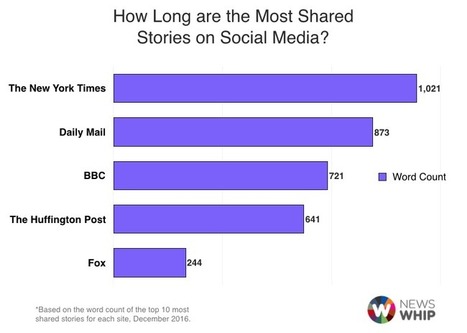
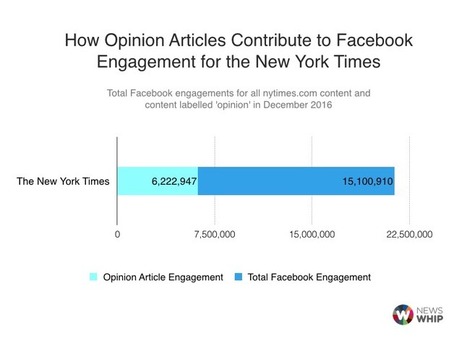



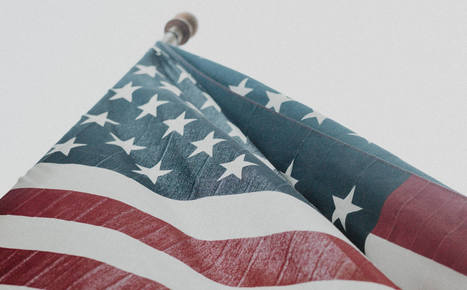

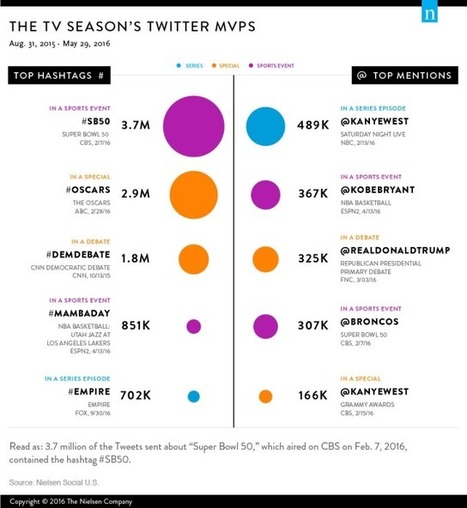
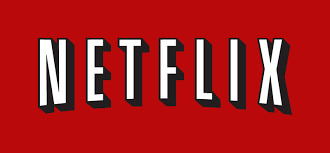

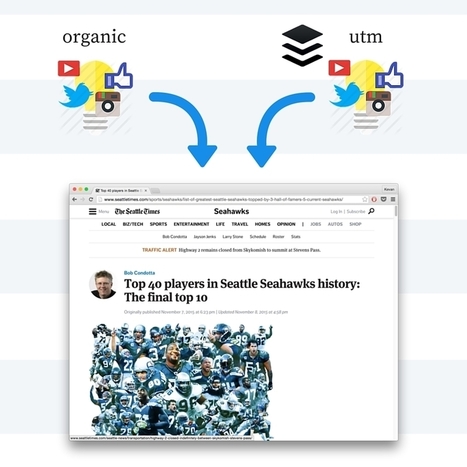

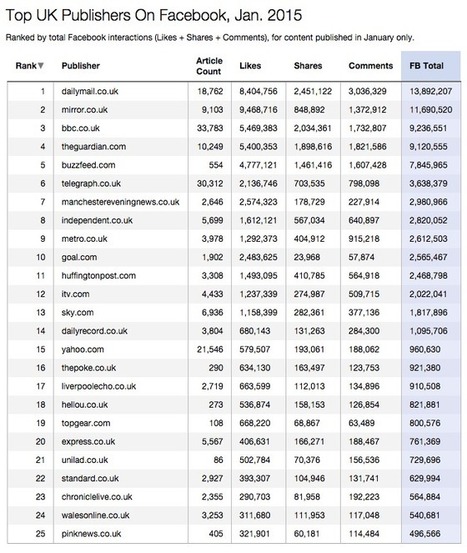




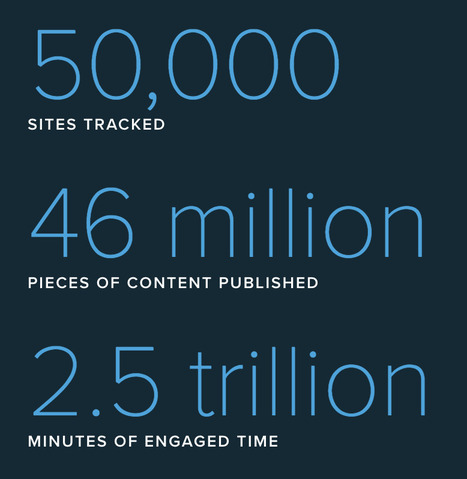
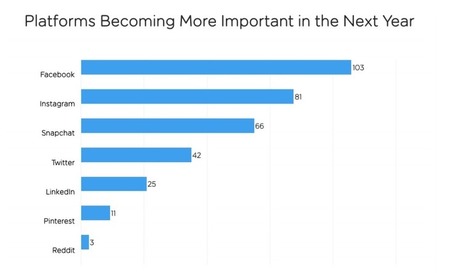

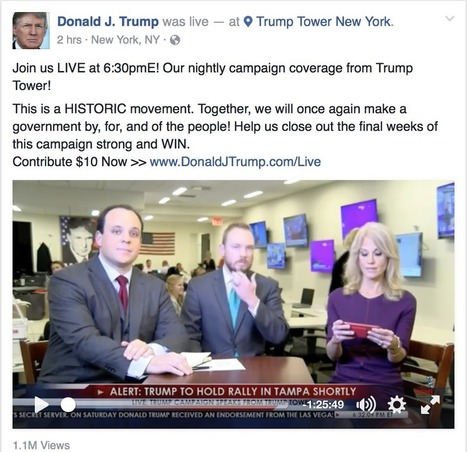
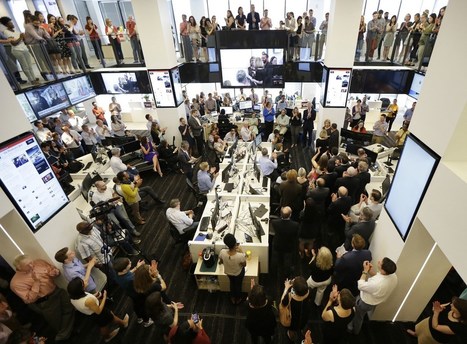



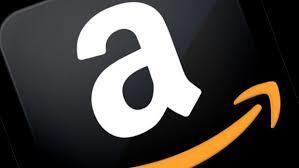

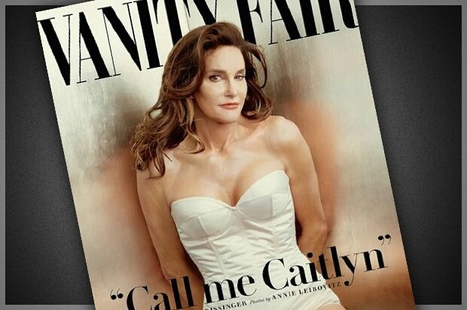
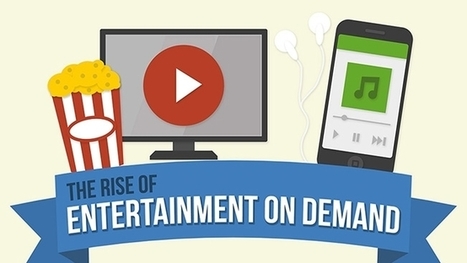






Jeff Jarvis writes a powerful post about the death spiral of Trump and the media.